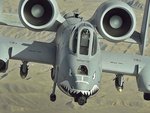Shortround6
Major General
It is also a fact that many RAF fighters carried 4 small bombs during WW I, They carried 4 small bombs in the 1920s and into the early 30s. They had squadron after squadron of "army cooperation aircraft" that carried a pair of 230-250lb bombs ( or sometimes four 116lb bombs) all during the 30s. Which seemed to disappear just before WW II or got little press. They did order 200 Henley dive bombers even if they didn't use them as such. Over 1700 Lysanders?
It might not have been Fighter Command's job to attack tanks on the battlefield but fighter command was NOT the entire RAF.
Perhaps memories of the losses involved in trench strafing made them reluctant to engage directly over the battlefield again, or given the horrendous losses for minimal result in the Battle for France made them not want to repeat the process.
Not to pick too much on the British the US did the same thing, P-26s carried bombs, P-35s carried bombs, export Hawk 75s could carry all kinds of bombs* (domestic P-36s couldn't ?) and many people claim the P-40 was intended for ground support with no bombs and just two .50 cal MGs. P-39s couldn't carry bombs?
Why did the US drop the fighter bomber ( or trench strafer) concept right before WW II?
*Factory Brochure for Hawk 75 lists a single 500lb under the fuselage as an option and a 100lb bomb under each wing as an option and under wing loads (each wing) of 5 30lb fragmetation, 5 25lb chemical, 3 50lb demolition standard.
Max bomb load given as 850lbs, one 500lb bomb, two 100lbs bombs and six 25lb bombs. And yet the P-40 couldn't carry bombs until the C model?
I think there was a lot of game playing with procurement and budgets rather than actual capability of the aircraft.
It might not have been Fighter Command's job to attack tanks on the battlefield but fighter command was NOT the entire RAF.
Perhaps memories of the losses involved in trench strafing made them reluctant to engage directly over the battlefield again, or given the horrendous losses for minimal result in the Battle for France made them not want to repeat the process.
Not to pick too much on the British the US did the same thing, P-26s carried bombs, P-35s carried bombs, export Hawk 75s could carry all kinds of bombs* (domestic P-36s couldn't ?) and many people claim the P-40 was intended for ground support with no bombs and just two .50 cal MGs. P-39s couldn't carry bombs?
Why did the US drop the fighter bomber ( or trench strafer) concept right before WW II?
*Factory Brochure for Hawk 75 lists a single 500lb under the fuselage as an option and a 100lb bomb under each wing as an option and under wing loads (each wing) of 5 30lb fragmetation, 5 25lb chemical, 3 50lb demolition standard.
Max bomb load given as 850lbs, one 500lb bomb, two 100lbs bombs and six 25lb bombs. And yet the P-40 couldn't carry bombs until the C model?
I think there was a lot of game playing with procurement and budgets rather than actual capability of the aircraft.

